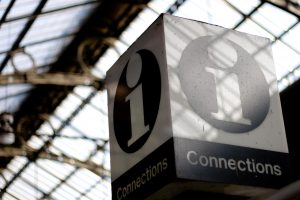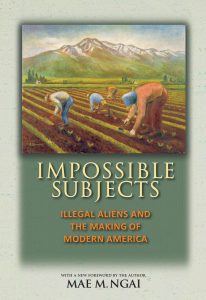By Amyaz Moledina
Wooster will be hosting Thi Bui, in September. Her book, The Best We Could Do: An Illustrated Memoir on Abrams ComicArts has been chosen as the 2019 Summer reading. The graphic novel is an exciting genre. I thought I would put together a quick list of resources to help any of you that will teach her book. I also add some other graphic novels that discuss various aspects of mobility and migration.
Background on Vietnam:
- Information for First Years from the “First Year Experience” at UCLA.
- Bui, Thi. “Reexamining the Refugee Story”
- Bui, Thi “Precious Time” Illustrated PEN America.
- Earle, Harriet E. H. (2018) “A new face for an old fight: Reimagining Vietnam in Vietnamese-American graphic memoirs.” Studies in Comics . Jun2018, Vol. 9 Issue 1, p87-105. 19p.
- Chung, Tiffiny “Vietnam: Past is Prologue” Exhibit at the Smithsonian Museum. Till September 2019.
- Carruthers, Ashley. Exile and return : Deterritorialising national imaginaries in Vietnam and the diaspora. Oct-2008. University of Sydney.
- Lindquist, J., Xiang, B., & Yeoh, B. S. (2012). Opening the black box of migration: Brokers, the organization of transnational mobility and the changing political economy in Asia. Pacific Affairs, 85(1), 7-19.
- Baddawi, Leila. Abdelrazaq, Pen America. https://pen.org/baddawi/
- Behan, Teju.. (2018). Drawing From The City. Tara Books, India
- Bessora and Barroux, trans. from the French by Sarah Ardizzone.Alpha: Abidjan to Paris Bellevue Literary (Consortium, dist.), (128p) ISBN 978-1-942658-40-5.
- Blaufarb, R., & Clarke, L. (2015). Inhuman traffick: The international struggle against the transatlantic slave trade : a graphic history. Oxford University Press.
- Caplan, Bryan and Zach Weinersmith (illustrator) Open Borders: The Science and Ethics of Immigration. First Second. United States.
- Colfer , Eoin and Andrew Donkin, illus. by Giovanni Rigano. Illegal Sourcebooks Jabberwocky, (128p) ISBN 978-1-4926-6214-3.
- Fitzgerald, A. (2018). Drawn to Berlin: Comic workshops in refugee shelters and other stories from a new Europe. Seattle, WA : Fantagraphics Books
- Kleist, Reinhard. An Olympic Dream: The Story of Samia Yusuf Omar. Self Made Hero. Apr. 2016. 152p. tr. from German by Ivanka Hahnenberger. ISBN 9781910593097.
- Kugler, Olivier. Escaping Wars and Waves: Encounters with Syrian Refugees. Penn State Univ, (88p) ISBN 978-0-271-08224-0.
- Ruillier, Jérôme. trans. from the French by Helge Dascher. The Strange Drawn & Quarterly, (160p) ISBN 978-1-77046-317-2.
- Sattouf, Riad The Arab of the future a graphic memoir : a childhood in the Middle East (1978-1984) New York : Metropolitan Books, Henry Holt and Company, LLC, 2015
- Shyam, B., Rao, S., & Wolf-Sampath, G. (2018). The London Jungle Book. Tara Books, India.
- Sulaiman, Hamid, trans. from the French by Francesca Barrie. Freedom Hospital: A Syrian Story. Interlink, (288p) ISBN 978-1-62371-995-1.
- Tan, Shaun. (2006) The Arrival. Hodder & Stoughton
- Tran, G. B. 1. (2010). Vietnamerica: A family’s journey. New York: Villard Books.
- Tonatiuh, Duncan, Undocumented: A Worker’s Fight Abrams ComicArts. Abrams Books. August 7. 2018.
- Vann, Michael G. and Liz Clarke (Author) The Great Hanoi Rat Hunt: Empire, Disease, and Modernity in French Colonial Vietnam (Graphic History Series) 1st Edition. Oxford University Press; 1 edition (June 1, 2018)
Graphic Journalism
Graphics journalism is a special form of journalism. It uses both words and graphic forms to present information. Merging comic art with journalistic processes, it reconfigures conventional notions of how we should consume news. Here are a few examples that deal with the issue of migration.
- Channel Draw by Gianluca Costantini
- The Boat and interactive Graphic Novel by Matt Huyhn based on Nam Le.
- Cartoon Movement
- Dan Archer of Arch Comix
Collaborations
See the two websites below for more pedagogy modules and an example of a collaboration between three courses.
Moledina, Amyaz. Leah Mirakhor and Matthew Krain (2015) “Borderlands: An interdisciplinary inquiry into Human Trafficking.
Moledina, Amyaz et al. (2018). “Challenging Borders: Resources for Teaching and Learning.”


 Europeans, and then looks at how these immigration restrictions created new categories of racial difference. Later chapters look at how immigration officials applied these policies to colonial subjects like Filipinos, Mexican agricultural workers not covered by the quota system, and Asians ineligible for citizenship. Pedagogically, the book provided an invaluable historical overview of the construction of race and national identity, while at the same time reinforcing close reading and analysis of secondary sources.
Europeans, and then looks at how these immigration restrictions created new categories of racial difference. Later chapters look at how immigration officials applied these policies to colonial subjects like Filipinos, Mexican agricultural workers not covered by the quota system, and Asians ineligible for citizenship. Pedagogically, the book provided an invaluable historical overview of the construction of race and national identity, while at the same time reinforcing close reading and analysis of secondary sources.